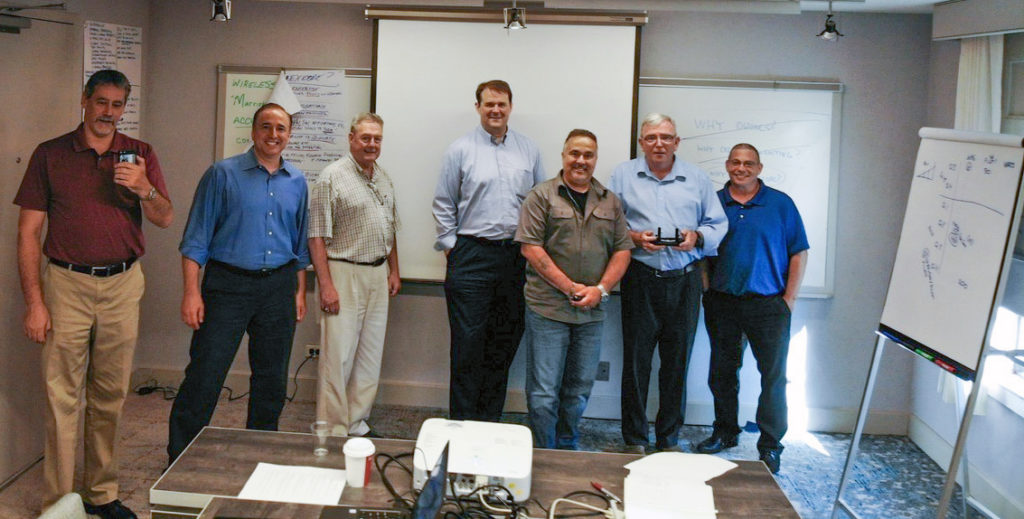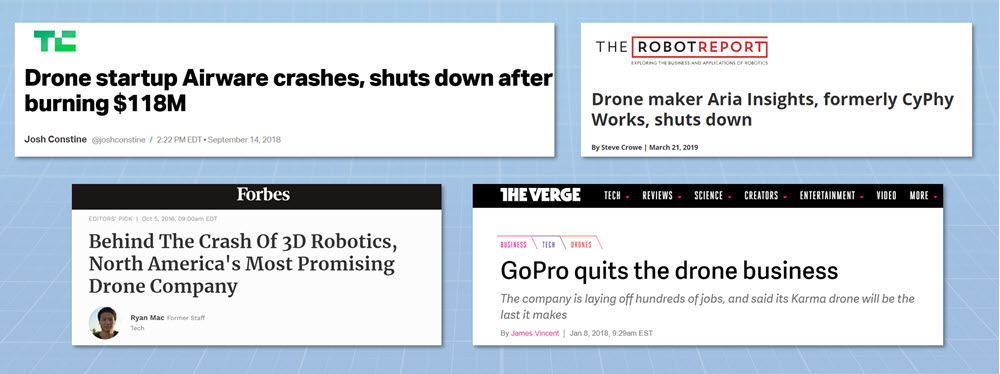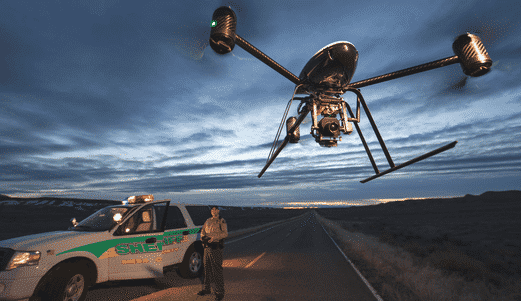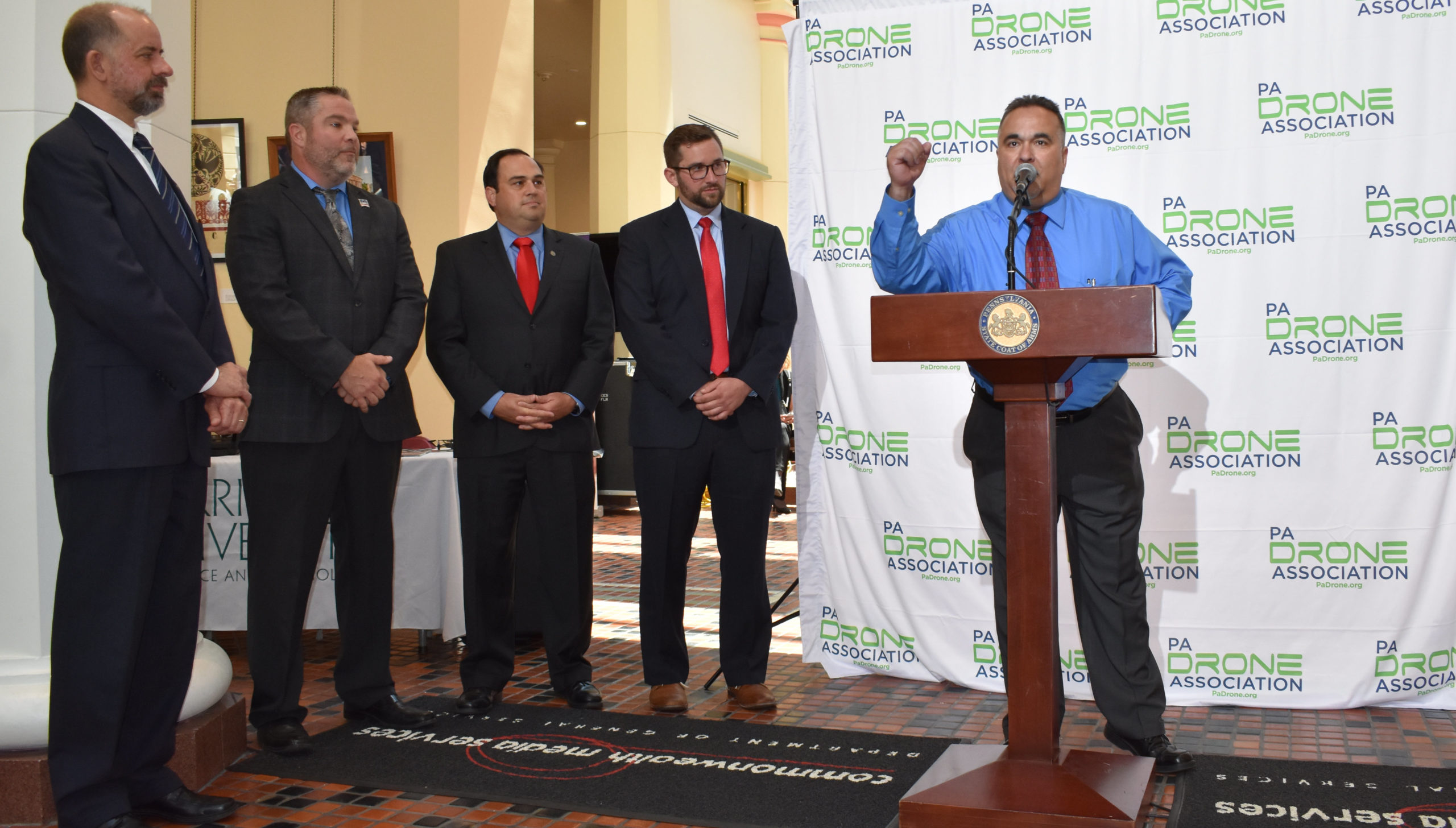Spring is here, and this marks our company’s sixth year in business. We actually did not start as a drone services company at all—we began as telecommunications consultants. And to think that I would be sitting here six years later after I decided to abandon the paradigm of “meet the new boss… same as the old boss”, (a line from a song by “The Who”, but I am digressing already).
Nonetheless, it has been quite a road since that day I asked my wife for her blessings to make a complete and risky career pivot at 51 years old. Back then, there was little information about drones. As a Navy aviation veteran, I knew drones were used for military applications. Around 2015, though, the Phantom 2 drone was released as a new commercially-available drone product. I started to visualize some of the benefits that drones could bring to the enterprise. It was still early days in the industry, so connecting enabling technologies was not quite there yet.

So, in the meantime, my business partner and I continued to try to grow our telecom consulting business…boring! As a telecom consultant, we were also resellers for typical traditional corporate phone systems, including conference bridges, SD-WAN, MPLS, data center redundancy, and dozens of other unified communication platforms. Quite frankly, though, it was already an over-saturated, low margin business. I had a passion to grow a new business and do something that no one else was doing, and knew this would not be the path. In my journey to try to address this, I decided to take a gamble and add drone services to our line card.

Once we started offering drone services, though, nobody wanted to talk about any of the other crap we were selling…they wanted to talk about drones! I realized I needed to become a drone expert. This required learning how to pilot and navigate a “real” drone which is basically an unmanned aircraft with an expensive camera on it. Eventually I conquered it…albeit with numerous “learning experiences” (i.e., gut-wrenching crashes of expensive drones.)
Since then, it’s been a roller coaster of both triumph, as well as trial and tribulation. In mid 2016, I decided to reposition and focus the company, removing all the telecommunication service lines, and exclusively focus on drone services and drone technology.

After six years of hard work and determination, I am so proud of the work that our team has done to build one of the leading turnkey drone service providers in the industry. Lately I have been doing a lot of reflecting and discussing the business with our team, partners and even our clients and I wanted to share six years (72 months) of insights, and lessons that I have learned during our growth.
Over the past six years, I’ve built my drone business from the ground up, including: getting my FAA Part 107 drone license, building a new drone services website, pitching investors, but most importantly….building a client base. Along the way we grew from a 4-pilot team to a nationwide partner network of over 1100 pilots, serving hundreds of clients across a range of industries.

As Volatus Unmanned Services continues to grow and mature, I realize the importance of learning something new every single day. The challenging part (each day) is to decide what is important to learn and how it would benefit my business growth with the biggest dividends.
Having been involved in the drone business since the industry began, I’ve witnessed a number of companies that have raised massive amounts of venture capital funding, but were unable to make their business model profitable.
When it comes to big bets that didn’t pan out, the first company that comes to mind is Airware. They were a drone software company who raised $118 million, and now no longer exist. Sci-fi Works, a very cool tethered drone company, raised $39 million, also no longer exists. In early 2019, 3D Robotics, a drone hardware company, had the 3DR solo drone (which actually was an awesome UAV!). They raised $179 million to take on DJI, the industry juggernaut. Today they no longer sell drones. While they are still in the industry and pivoted as a software company, they are likely not performing nearly at the expectation of investors when they set out on this vision of being a leading drone hardware manufacturer.

Other companies, like Parrot, a French drone manufacturer, did not necessarily raise massive amounts of capital, but they have had to pare down their line of drones quite a bit. Then there’s GoPro, which still is a very successful company, but their Karma drone could not stack up, combined with a botched product launch and poor execution from their team.
Drone industry investment activity has been fascinating to watch. I imagine it’s not uncommon in other evolving dynamic industries to see a massive injection of capital in a short amount of time, resulting in the rapid rise and fall of many these companies.
Drones are becoming a key element in many industries. According to drone industry statistics, the number one industry using drones today is construction. Energy and utilities are second and third, with filmmaking, insurance, agriculture, and real estate in the mix as well. Agriculture and farmers are using drones to get much more timely and accurate data about the health of their crops. Real estate brokers/agents, property managers, asphalt repair companies, and car dealerships are all using drones to market their properties, locations, and the condition of the property.

We’ve come a long way from drones being just a cool little “flying camera” to something that enables powerful data applications as well. I applaud and encourage all those geeks out there who are developing new software platforms for even more business use cases.
For example, when I first got into the drone industry I never expected they could be used for inspections and mapping. Drones are used now to inspect infrastructure such as telecommunications towers, windmills, and solar panels. Construction companies and real estate development firms want progress monitoring shots, as well as volumetric calculations of how much dirt or material is present. Insurance adjusters no longer need to make a dangerous climb to the top of a roof!
I am all for capitalism, I love that people are out there making money flying their drones and following their dream, either as an individual drone pilot or working in-house for a construction company or insurance company.
What is even better is when lives are being saved, and drones playing a role in that more and more. Volatus Unmanned Services has had the privilege of working with search and rescue teams to save lost hikers. Police officers are using drones to investigate crime scenes and create incident mapping, while fire departments are using drones to monitor fires.

Drones are being used to help lifeguards better monitor shark activity. AT&T used drones to restore communications after Hurricane Michael in Puerto Rico. In the aftermath of earthquakes, floods, and fires, drones are doing quite a bit of good helping save lives in the moment, and helping people rebuild their homes and businesses in the aftermath.
So while drones are providing livelihoods, businesses, and investment opportunities, this powerful technology is also being used to directly save lives.
My next insight would be to respect the regulations, as well as the regulatory process. However you may feel about it, it cannot be escaped or avoided. Personally, I think it’s fascinating how regulations are drafted, sent out to the public, then ultimately enacted and enforced.
Originally, there was the Section 333 exemption back in 2014. It required submitting about 5000 pages of paperwork to the FAA. Then you had to wait 6-7 months to hear back from them with a thumbs up or thumbs down. Then, even if you got approved, you still had to have a pilot licensed for manned aircraft to fly the drone. The net effect of all that was a culture of non-compliance!

Then, when the Part 107 regulations came out in late 2016, it was fascinating to watch—the new public and private partnerships, such as LAANC (Low Altitude Authorization and Notification Capability), the automated authorization process roll-out, the new draft rules for other exciting things like being able to fly over people or fly at night without a waiver, Remote ID, the list goes on. While it is not something I necessarily would have thought I would be geeking out about five years ago, I’ve always respected the regulatory process.
Overall, the drone industry is trending in the right direction. Imagine you are working at the FAA in 2015, and all of a sudden there are tens of thousands of people buying drones from places like Amazon.com. How the heck do you regulate that?? For the first time in aviation history, you have regular citizens that can launch an aircraft into the air.
While on the surface there might appear to be similarities with model aircraft, they are different, with a different culture. Model aircraft enthusiasts are people who enjoy tinkering and building, and understand how to fly in a confined area. (Whereas with drones, there are people landing their drone on the White House lawn…at 2 am! I remember that story, and thought it would shut the entire industry down.)
It has been fascinating to see the journey of regulations getting created and enforced. I guarantee we will continue to see a lot more of that over the coming years.

And the last, and most current, insight I have the pleasure of talking about is… being in an industry like this is likely a once-in-a-lifetime opportunity. I think it is just as important to acknowledge that I feel so blessed, grateful, and humbled to have worked with drones and all the interesting people I have met over the last six years who have helped push this industry forward.
If you have made it this far through my blog post, you are likely deeply passionate about or already actively involved in the drone industry. Hopefully, you recognize what a precious opportunity we all have, and the importance of continuing to fly safely and responsibly. So, with that said, thank you again, happy six years to our team, and to all who have been in this exciting industry.

Frank Segarra is the Senior Vice President of Sales at Volatus Unmanned Services. He has over 30 years of IT, telecommunications and aviation industry experience and was a US Navy aircraft carrier airman specializing in Avionics Engineering. As a thought leader in drone technology, Frank was invited to be a founding member and CompTIA Drone Advisory Council. and is on the Board of Advisors for the PA Drone Association.
Find out what you need to know when hiring a drone service, and learn about creative ways that different industries use drones to improve data, reduce risk, and achieve business objectives.